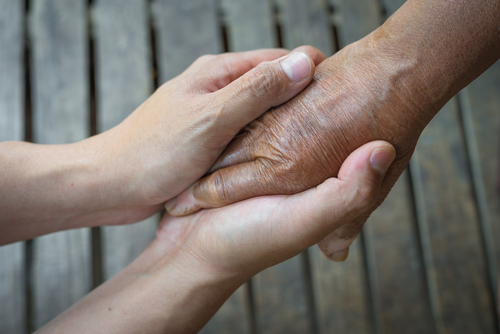Earlier this month we took a look at some common occupational hazards for the home healthcare industry, including injuries related to musculoskeletal disorders and occupational stress. Today, we are looking at the exposure to workplace violence among home healthcare providers.
The community setting where home healthcare providers work make them more vulnerable to violent assaults than in hospitals. There are several factors for this including the fact that a patient’s home may be in a high-risk area for violence; there may be drug traffic or high-crime areas nearby. A patient’s history of mental illness, alcoholism, drug abuse, or violence may also increase the risk.
Moreover, home healthcare workers may need to resolve violence-related issues without immediate help from their employers or coworkers, as they are not in a traditional workplace. The patients may have complex physical, psychological, psychiatric, and social needs. The potential for alcohol and drug abuse and the presence of firearms in patient homes further endangers a worker. In addition, family issues are more likely to increase in intensity and become out of control in the home than in the hospital setting.
Workplace violence for home healthcare providers comes in various forms – from verbal abuse and threats of assault to homicide, according to the National Institute for Occupational Safety and Health (NIOSH). Examples of violence include threats to cause harm, physical assaults (slapping, beating, the use of firearms) and mugging with the intent to rob. The effects of violence can range from minor to serious physical injuries to temporary or permanent physical disability to psychological trauma.
Home healthcare employers can help prevent and control violence in a patient’s home by establishing violence prevention programs and tracking their progress in reducing work-related assaults. OSHA recommends the following measures be implemented:
- Create a zero tolerance policy for workplace violence.
- Ask employees to report each incident, even if they think it won’t happen again or it might not be serious.
- Develop a written plan for ensuring personal safety, reporting violence, and calling the police.
- Conduct training on the workplace violence plan when the employee is hired and annually thereafter.
- Let workers know about the risks of their assignments and how to assess the safety of their work environment and its surroundings.
- Train employees to recognize verbal abuse.
- Train employees to identify different types of illegal drugs and drug paraphernalia.
- Train employees to recognize the signs and body language associated with violent assault and how to manage or prevent violent behavior, such as verbal de-escalation techniques and management of angry patients.
- Investigate all reports of a dangerous work environment and of violent assault.
- Do not place workers in assignments that compromise safety.
- Provide cell phones to all staff on duty.
- Consider other equipment, such as employer-supplied vehicles, emergency alarms, two-way radios, and personal bright flashlights to enhance safety.
- Establish a no-weapons policy in patient homes.
- If such a policy is not required, request at a minimum that before service is provided, all weapons be disabled, removed from the area where care is provided, and stored in a secure location.
Again, having a strong risk management strategy in place that addresses the various exposures of workplace injuries is key to providing a safe environment for home healthcare workers and to help prevent accidents and injuries from occurring. Caitlin Morgan offers Workers’ Compensation insurance along with loss control and risk management solutions to the home healthcare industry. For more information about our suite of products and services, give us a call at 877.226.1027.


